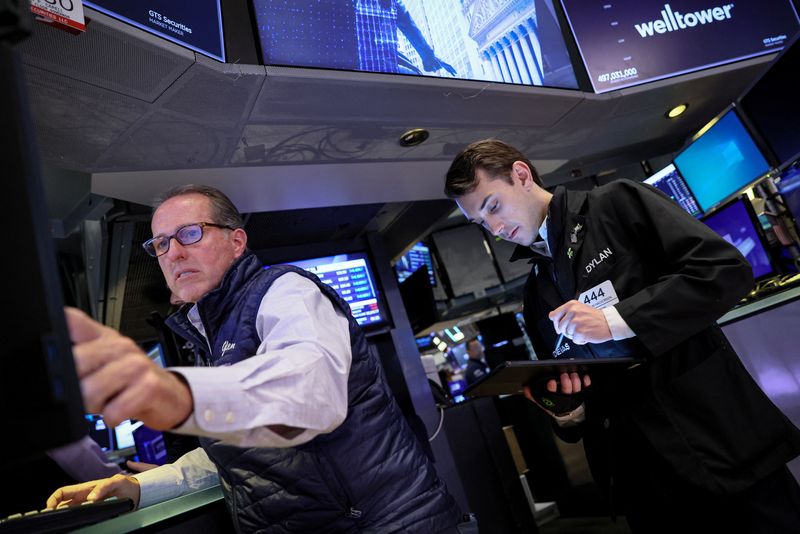By Chuck Mikolajczak
NEW YORK (Reuters) -S&P 500 advanced on Thursday, putting the benchmark index up 20% from its Oct. 12 closing low and heralding the start of a new bull market, at least by the definition of some market participants.
Part of the uncertainty is that there is no set definition of a bull or bear market, or any sort of regulatory body that declares one, such as the National Bureau of Economic Research (NBER) does with recessions.
The S&P 500 rose 0.6% in Thursday's session, lifted by technology stocks, while volatility dropped to record lows ahead of an eventful economic and policy calendar next week.
The Nasdaq added 1%, and it is now up nearly 30% from its closing low last December.
The most commonly accepted definition is a 20% rise off a low for a bull market and a 20% decline from a high for a bear market, but even that is open to interpretation.
"The problem is there is no authority of rules or regulations on there, 20% came back from the really olden days, like during the First World War, it was the first time we see it," said Howard Silverblatt, senior index analyst at S&P Dow Jones Indices in New York.
According to Silverblatt, there have been 15 bear markets for the benchmark S&P index, beginning in September 1929, at the end of the Roaring Twenties boom, to the current one which began on Jan 3, 2022.
Sam Stovall, chief investment strategist at CFRA in New York, adds a time element to his bear market criteria, requiring a low to remain intact for a duration of at least seven months, which he believes removes the risk of a quick reversal lower after a rally of 20% or more, such as what happened during the Great Financial Crisis.
"In 2008, the S&P hit its low on Nov 20, we then advanced by more than 20% into early January only to turnaround and set an even lower low, by March 9," said Stovall. "I just think it was a blip within a longer-term bear market."
In a note on Monday, Dan Suzuki, deputy chief investment officer at Richard Bernstein Advisors in New York, took an even more layered approach since "it is certainly possible for this rally to evolve into a full-fledged bull market, historical precedent suggests it is far from a foregone conclusion."
One commonality Suzuki found in bull markets is a broad participation across sectors, something lacking in the current rally as most of the more than 11% gain in the S&P 500 this year has been concentrated among a small amount of very large stocks such as Nvidia (NASDAQ:NVDA), Meta Platforms and Amazon (NASDAQ:AMZN).
"Certainly it's a bull market in big-cap technology. I wouldn't call it a bull market in a broad market sense, because there are only certain stocks that are really in what we would call bull market territory, and it's just not a broad enough move to call it a sustainable bull market," said Tim Ghriskey, senior portfolio strategist Ingalls & Snyder in New York.

Taking a different view altogether is Ned Davis Research, which the Stock Trader’s Almanac relies on for defining bull and bear markets. It says that a cyclical bull market requires a 30% rise after 50 calendar days or a 13 percent rise after 155 calendar days for the Dow Jones Industrial Average or the Value Line Geometric index, an equal-weighted index of nearly 1,700 stocks.
But while the S&P 500 has just cleared the 20% hurdle, for some, a new bull market will not begin until the index clears its prior high from January 2022, according to Silverblatt, and until then, "it’s a bull run in a bear market."